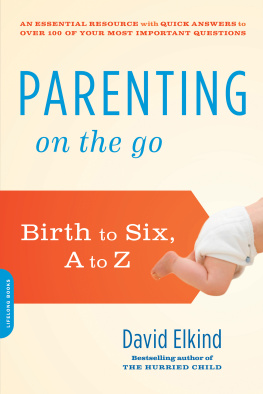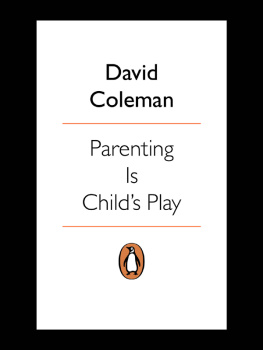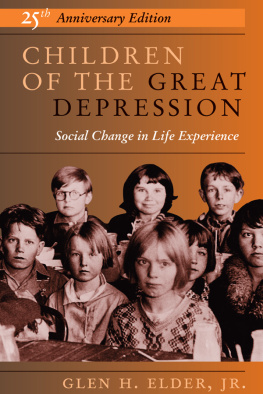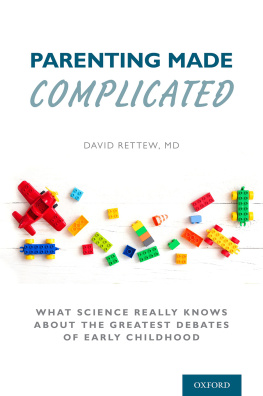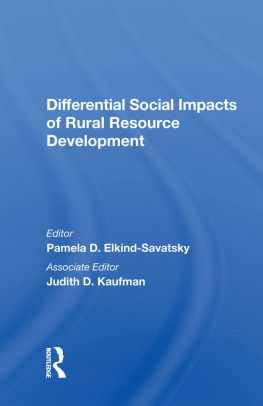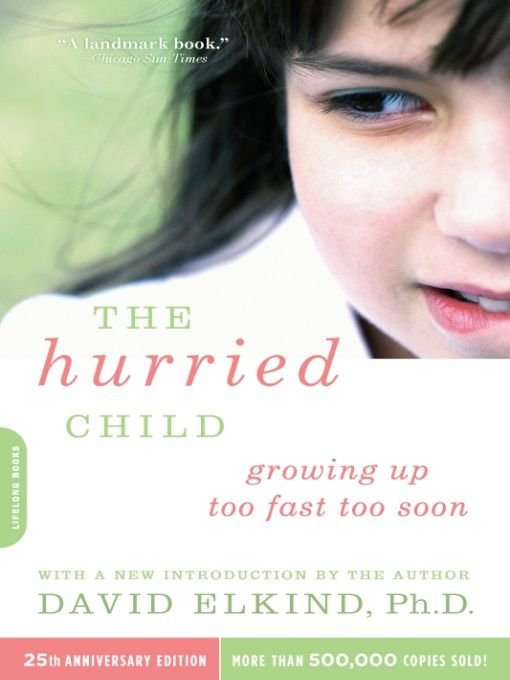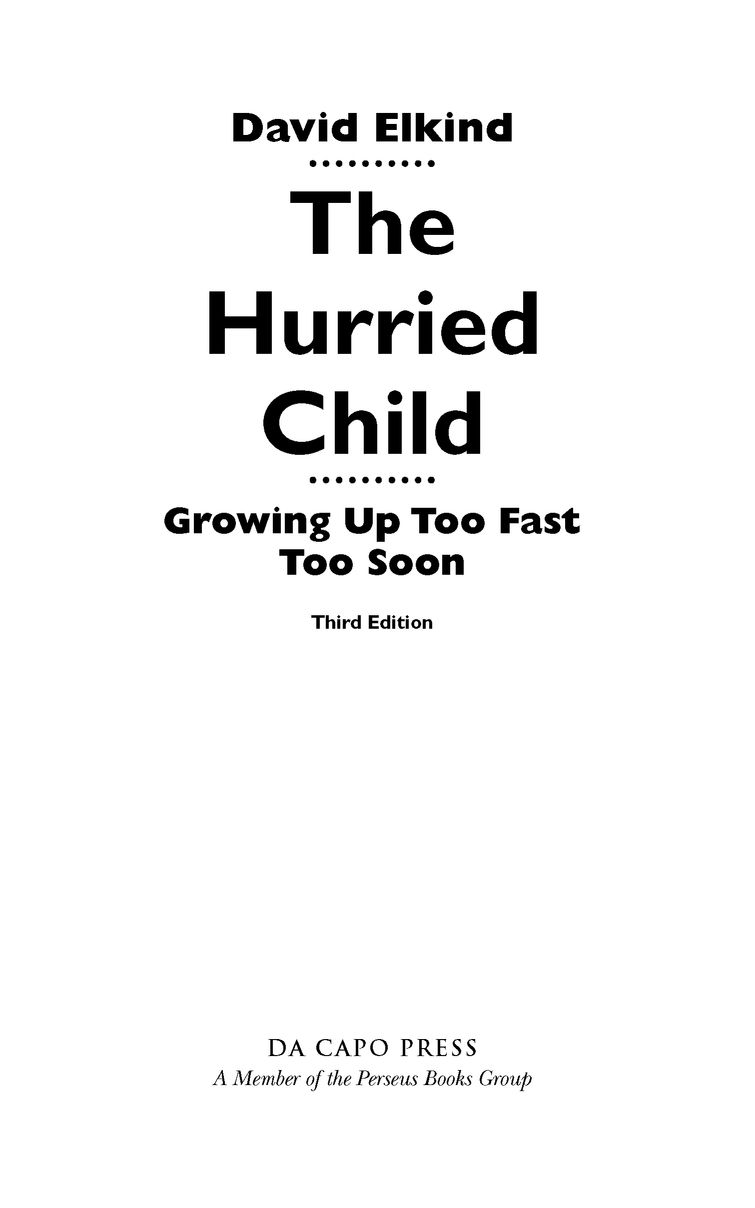Table of Contents
To the beloved memory of my sister Ruth
Preface to the Twenty-fifth Anniversary Edition
In the introductory prefaces to the two earlier editions of this book, I addressed changes in the hurrying behavior of parents, schools, and the media that occurred over the intervening time intervals. In this introduction to the twenty-fifth anniversary edition of the book, however, I take a broader social perspective in order to document what might, without exaggeration, be described as the reinvention of childhood. This reinvention is the result, in part at least, of the ways in which electronic media have come to permeate our lives over the last quarter of a century.
From a historical perspective, a quarter of a century is only a brief moment in time. Nonetheless, there are some moments in time that are major turning points in social evolution. The past twenty-five years may well be regarded as such a turning point, having witnessed extraordinary technological advances that have revolutionized the ways in which we live and work. The magnitude of this transformation is what led literary scholar and media maven Marshall McCluhan to argue that electronic media are bringing about a new era as powerful, if not more so, than the one ushered in by the introduction of print in the fourteenth century. Print elevated us from a preliterate, oral culture to one based on the printed word. McCluhan contends that electronic technology has ushered in a new media culture that is as far removed from the culture of print, as the culture of print was from the preliterate, oral culture that preceded it.
It remains to be seen whether McCluhans observation is correct, in whole or in part. What is not in doubt is the fact that advances in information technology over the past quarter of a century have metamorphosed not only society in general, but child and family life in particular. When I wrote The Hurried Child in 1981, I had no inkling of the technological revolution that was to come. Indeed, I wrote the manuscript in pencil on lined, yellow pads, typed it up on an electric typewriter, and sent the manuscript to the editor via parcel post. This new introduction, written in 2006, was typed on a computer and sent to the editor as an attachment to an e-mail over the Internet. My concerns for children in 1981 were equally bound up in the culture of that era. I was concerned about schooling and sport programs for children that were age inappropriate and stressful, about the effects of sex and violence on television, and about the influence of rock and roll music.
In the time that has elapsed since that initial publication, those concerns already seem quite dated, if not naive. In the interim we have become a screen culture. Television, computer, and cell phone screens are now permanent fixtures in our homes, our businesses, our restaurants and bars, and our airports. We do much of our work, shopping, banking, and game playing online. Wireless laptops, cell phones, and Blackberries keep us in touch even when we are on vacation. Our hurried and hurrying society, which I wrote about in the first edition, has become even more so with the pervasiveness of electronic media. In response to user demands, computers are faster than ever before and have grown exponentially in memory. We chafe if we have to go online via a phone line, which is so much slower than a cable or wireless Internet connection. To make e-mail as immediate as a phone call, instant messaging (IM) was introduced and now competes with the phone as a regular means of communication.
The electronic media have simply reinforced our need to hurry and our ability to get things done quickly. Much of this spills over into our child rearing and education. Indeed, the revolutionary nature of the last quarter of a century is reflected in at least five new innovations in the lives of children. These new features of child life have grown more powerful across these last decades and continue to do so. In many ways, our new technologies have radically transformed childhood, and not always for the better.
From a child development point of view, perhaps the most significant transformation in child life has to do with the new attention to stimulating infants and young children. Infancy and early childhood are now the focus of hurrying. Over the past twenty-five years there has been an explosion of programs aimed at stimulating and educating infants and young children, not to mention the fetus in the womb. As to the latter, there is now on the market a fabric pouch made by BabyPlus, which is meant to be strapped to a pregnant womans stomach and gives off, according to the company ad, scientifically designed rhythmic sounds that resemble a mothers heartbeat. The rhythm of the sounds increases incrementally and sequentially as the pregnancy progresses. The... sound patterns introduce your baby to a sequential learning process, built upon the natural rhythms of their own environment.
Although there is little or no research in support of any of these programs or materials, this has not prevented advertisers from making rather extravagant claims regarding their benefits. For example, the ad copy for this pouch goes on to say, Babies and children enriched with BabyPlus are more relaxed at birth, with eyes and hands open, crying little. It also claims that they reach their milestones earlier and have longer attention spans.
In a similar vein, but for babies, not fetuses, the athleticBaby video ads are equally upbeat. The ad for athleticBaby All-Star claims that it shares a lively array of sports related imagery, puppets and young children engaged in active play. The entertaining presentation offers babies and toddlers an inspirational introduction to physical activity and a variety of sports, including basketball, soccer, tennis, baseball and golf. What infants and toddlers can gain from watching basketball, soccer, and tennis leaves me baffled.
These programs are just the tip of the iceberg. There is also a whole series of Baby Einstein DVDs, a vast array of animated LeapFrog learning products, and computer programs for infants and toddlersthe so-called lapware. These products are called lapware because an infant is supposed to sit on his parents lap while punching a large mushroom-shaped mouse that makes things happen on the screen. The advertised claims for these programs are as dubious as those for BabyPlus and athleticBaby.
Nonetheless, the infancy and early childhood education/stimulation market is booming. Today, DVDs, videos, computer programs, exercise, swimming, and even sport classes for the very youngest children have grown into a giant industry. From 20022004 alone, sales of Baby Einsteins Number Nursery and Brainy Baby Companys Left Brain have tripled to $100 million. And kidvids, marketed to children from six months to five years old, are hot sellers. Taking account of the fact that 4 million babies are born in the United States each year, executive editor Stephanie Prange of Video Store Magazine says, You can mine this market forever.
The popularity of these materials is directly related to the introduction of computers, VCRs, and DVD players into the home. These technologies now take up far more of the infants and young childs time than did the record players available when my sons were growing up. Videos and DVDs are much more invasive, as they provide visuals as well as sound, and unlike records, they can play for hours at a time. In addition, the array of programs available through these media is enormousa vast repertoire of past films and TV programs is now available for home use.


